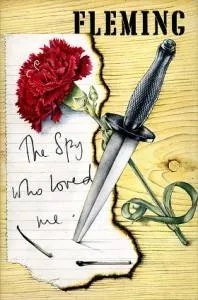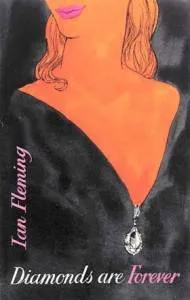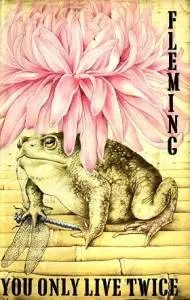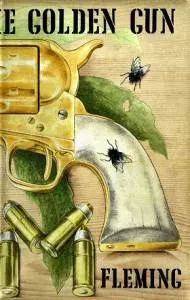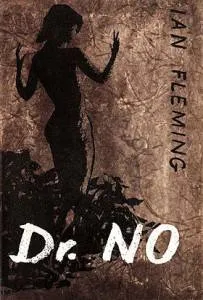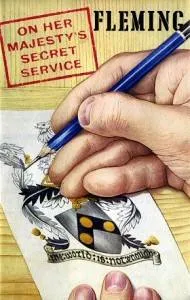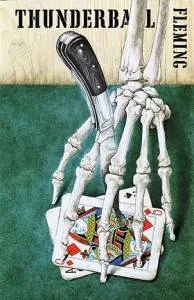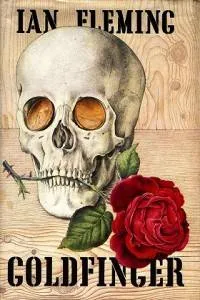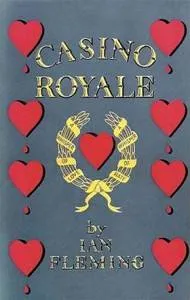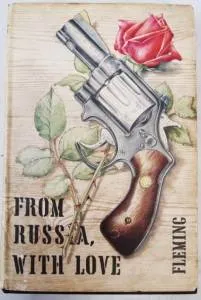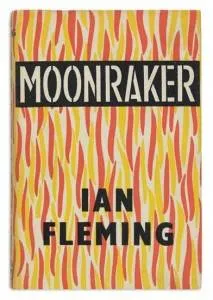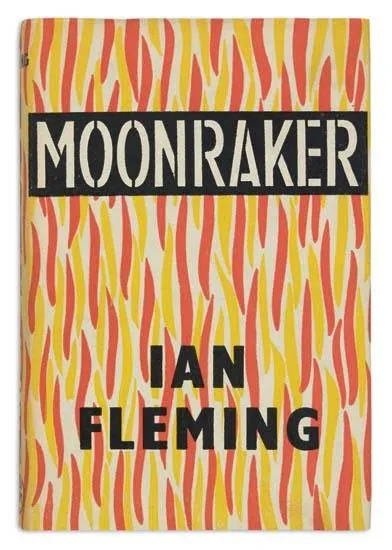
Best of Book Riot: Ranking Ian Fleming’s James Bond Novels
With the 50th anniversary of the first Bond movie and the release of Skyfall, 2012 is a big year for 007. As a fan of the movies (especially the Connery and Craig iterations), I’d always wondered what the books were like. So, this summer I decided to read all of the original Fleming Bond novels. Like their cinematic counterparts, they vary wildly in quality; the best of them are fantastic and the worst of them range from being a chore to being more than a little offensive.
Fleming wrote a novel a year starting in 1953. He wrote each of the novels while on his annual three-month vacation from his newspaper job in London. Fleming, writing at this pace, can be both sloppy and suspenseful. When he is in the groove the books fly by like an Aston Martin on a winding French road. When he takes a wrong turn, there’s very little time to recover.
And while Fleming was great with action and procedure, his greatest creation is Bond himself. The Bond of the novels is unshakeably loyal, quietly debonair, and able to withstand tremendous pain. Compared to the screen Bonds, Fleming Bond enjoys the good life, but isn’t a playboy. His taste is impeccable, but is also shadowed from his orphaned, public-school upbringing. He lives to please M and save England—cards, women, and caviar are the bread and water that makes those his primary directives possible.
What follows is my ranking of the these twelve original Bond novels from worst to best. The best three (Casino Royale, From Russia With Love, and Moonraker) would probably be enjoyable to anyone who likes a spy novel; the bottom three are painful for even the most devoted fans of 007.
____________________________
Strengths: Apart from Bond himself, the pleasure of these novels is in the con: from cormorant guano in Dr. No to nuclear warheads in Thunderball. Here, the game is smuggling sunken treasure from shipwrecks around Jamaica, where Fleming had his vacation home, Goldeneye. It’s both fun and informative, in a “what-if” sort of way.
Weaknesses: Race is a problem for Fleming. He tries to imbue his non-white characters with personality and individuality, but his characterizations come out as grotesques. Here, the voodoo chieftain/SMERSH operative Mr. Big is an all-seeing gorilla, who controls wildlife and the locals. Add in an unfortunate decision to try writing dialect in a Harlem nightclub, and Fleming’s second Bond novel is his most cringe-worthy.
____________________________
Strengths: Fleming’s 10th Bond novel was his most unusual; it is the only one told solely from the perspective of someone who isn’t Bond.
Weaknesses: Unfortunately, Fleming spends so much time giving us the protagonist’s meandering, bizarre backstory that by the time the action, such as it is, starts, it’s extraordinarily difficult to care. It’s a failed, uninteresting experiment that Fleming himself seemed to recognize, judging from return to the Bond/Blofeld rivalry in his next novel, On Her Majesty’s Secret Service.
____________________________
Strengths: It’s great fun to see America through Fleming’s eyes. As an intelligence officer during World War II, Fleming watched first-hand America’s transformation into a global superpower. He is both fascinated and repelled by America, admiring its spirit, resources, and optimism, while also finding it a hollow showplace for consumerism. There’s a great bit at the beginning about horse racing and Saratoga Springs that is particularly well-constructed.
Weaknesses: American mobsters are buffoons here, and a climactic scene involving a meticulously re-created Old West town piles caricature on top of caricature. Maybe I’ve seen The Godfather too many times, but I wish Fleming had written his mafia as more Corleone than clown.
____________________________
Strengths: Bond is so attuned to European sensibilities that his Western nemeses never provide much of a challenge, at least intellectually. So seeing Bond in Japan and dealing with a radically different worldview is refreshing, as he is as clueless about the custom of the country as we are in the rest of the novels. Fleming also gives us Bond in pastoral repose when he considers chucking it all away to live in a small fishing community. The regrettably-named Kissy Suzuki even steals the emotional center of the novel away from Bond by the end.
Weaknesses: Ernst Stavro Blofeld, Bond’s only recurring nemesis, appears for the third and final time here, and his presences in the series has worn thin: he has twice radically altered his appearance to avoid detection and has been so substantially defanged here that the stakes, while personal for Bond, seem trivial.
____________________________
Strengths: Outside of London, Fleming seems most comfortable writing the Caribbean. His Caribbean lies at the nexus of world struggle, and Bond finds himself in the middle of a tug of war between Castro and capitalism. This is also the first time Bond goes against someone with admittedly superior marksmanship, and his twin interest in and fear of matching skills with Scaramanga, “The Man With The Golden Gun,” is compelling. At the end of this, Fleming’s last Bond book, 007 reveals a rare glimpse into his deeper psychology, which serves as a satisfying farewell to the original novels.
Weaknesses: It takes an enormous coincidence for Bond to find Scaramanga, which would be easily overlooked if the final showdown weren’t such a rushed, nearly incomprehensible surge of action. The duel we were hoping for is a tremendous letdown, though Scaramanga’s final tableaux is memorable.
____________________________
Strengths: Dr. No’s “Crab Key” is the archetypal lair, resplendent with an enormous glass wall exposed to the open ocean, scrupulously maintained luxury accommodations, and inexplicably ready-made obstacle-course escape route. No himself is fearsome and maniacally, inhumanly rational, as symbolized by his mechanical hands. The history and fluctuating value of cormorant guano is explained at weirdly pleasurable length here as well.
Weaknesses: The best Bond stories have a great villain and a great vixen. While Dr. No stands with the best of the Bond baddies, Rider Honeychile is laughable. Orphaned at a young age, Honeychile was left to fend for herself among the ruins of her family’s Caribbean estate, where she acquired animal communication skills of Dolittlian proportion. She is a crab-whispering nereid with Bo Derek’s hair and body.
____________________________
Strengths: Bond with a zany cover. A mysterious group of nubile young women. The hunt for Blofeld following the beautiful failure of THUNDERBALL. A heart-racing ski-chase and a mountain-top helicopter raid. Need I say more?
Weaknesses: There’s so much in On Her Majesty’s Secret Service that it feels overstuffed, and the ending comes off as an overreach for pathos. It feels like a baroque Bond, past the prime, but not yet in decline.
____________________________
Strengths: Felix Leiter, Bond’s friend and opposite number in the CIA, makes the most of his biggest part in any of the novels. As co-investigators of a nuclear warhead heist-and-ransom, Bond and Leiter play the laconic Brrambunctious American duet beautifully. Add to that a genuinely ingenious, high-stakes conspiracy, and you have a first-rate thriller.
Weaknesses: As a character, Emilio Largo isn’t among the best of Bond’s adversaries. He’s suave and capable, but lacks the idiosyncrasy and backstory to be transcendent. His mistress, Domino Vitali, is a fine paramour for Bond, but not on the order of Vesper Lynd or Teresa di Vicenzo. Again, we are in the upper echelon here, so any picks will only be of nit size.
____________________________
Weaknesses: Considering its position on this list, Goldfinger actually has quite a few shortcomings, not the least of which is a wildly implausible plot (even for a Bond story). Goldfinger lacks a magnetic leading lady and relies, as so many of these novels do, on head-smacking coincidence.
Strengths: A good villain carries a lot of water, and Auric Goldfinger is my favorite of these novels. He’s odd, capable, bizarrely charismatic, and gets up close and personal with Bond in a way no other villain does, even to the point that he and Bond play golf together. That Bond beating him at cards is as satisfying as foiling his plot shows the electricity between them.
____________________________
Weaknesses: I really have only one complaint about Casino Royale–the overly complicated rationale for needing to bankrupt Le Chiffre, who himself seems a bit small-time. Perhaps it’s my own ignorance of post-war Soviet/NATO propaganda warfare, but discrediting Le Chiffre in public seemed too subtle a goal for a spy thriller.
Strengths: That aside, Casino Royale is everything you want from a Bond novel. The gambling scenes are intense; Vesper Lynd is up to Bond’s scratch in every way; SMERSH is at its most menacing; and Bond himself seems both capable and exposed. You could do worse than to start and end your Bond reading here.
____________________________
Weakness AND Strength: What I love about this one is the same thing that some might fault it for. It has the most unusual structure of any of the Bond novels. We spend the first few dozen pages getting to know a badass Soviet hitman, and then he disappears for a hundred pages. Then we get to know a Russian double-agent and learn that she is going to try to bring Bond down, and then SHE leaves the story for a while. Bond himself doesn’t even appear until well into the book. The reader knows the basic outline of the scam SMERSH is trying to run on Bond, but not how it is going to play out or who we are supposed to trust. Throw in a ride on the Orient Express and some fisticuffs in Istanbul, and you’ve got just a great spy/thriller joyride.
____________________________
Weaknesses: none.
Strengths: Here it is, the Platonic ideal of a Bond novel. A believable but larger than life ex-Nazi rocket scientist with an amazing name (Hugo Drax). A classic Cold War anxiety plot. A cool, collected, and smoking hot female intelligence agent that Bond respects, but also puts the A-level moves on. Henchmen whose bizarre uniformity actually makes sense. A gambling scene that, while not in a casino, is as satisfying as any car chase. Moonraker is everything you want from Bond. Unfortunately, the film of the same name is completely different, so don’t let that lesser-film infest this superior novel. It’s as crisp and hard-hitting as an ice-cold martini.



